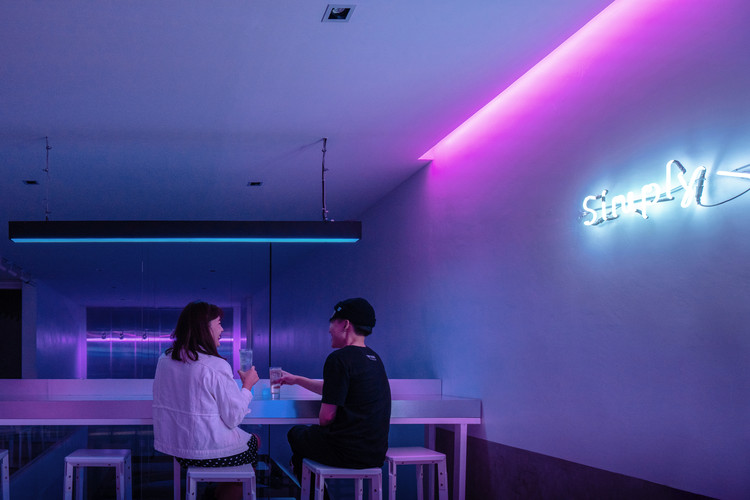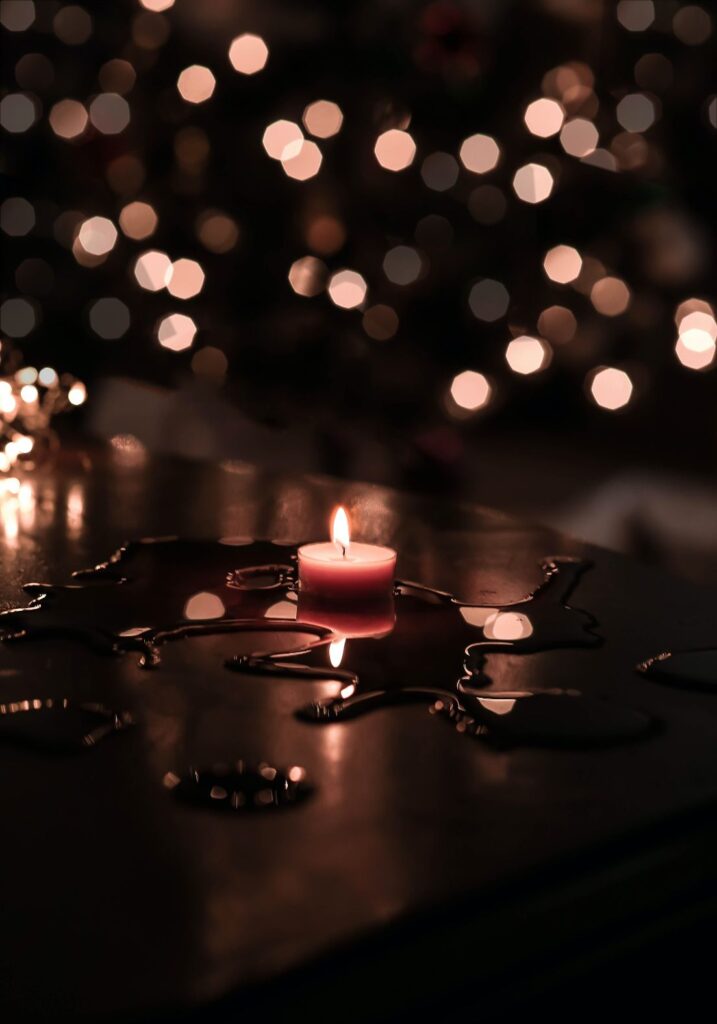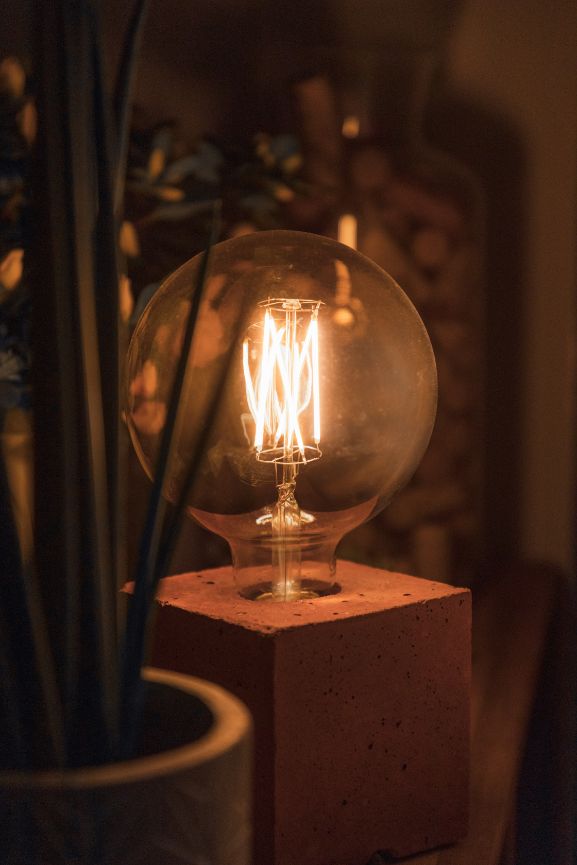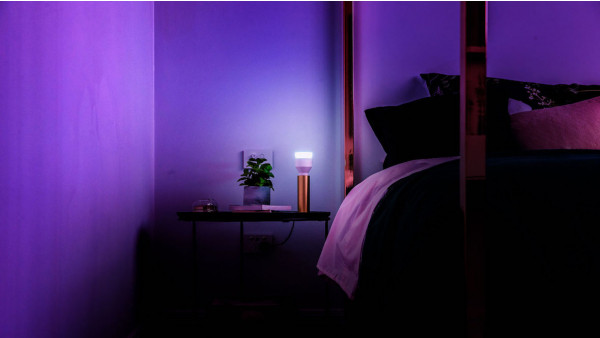We’re all beginning to pay closer attention to the lighting in the home as the nights grow longer. With the help of mood lighting, your home can be transformed from a place to exist into one where you can truly live, laugh, and unwind.
Did you know that light can enhance our actual mood? We’ve all heard of mood lighting being used in bars and restaurants to boost business or to create the desired atmosphere. If you are interested in mood lighting, please read on for more information.
What Is Mood Lighting?
It’s incredibly beneficial to adjust the lighting in your environment, and even better, it’s simple to do. You’re probably quite familiar with brightly lit grocery stores and dimly lit restaurants, which is why many businesses use different lighting solutions to achieve the desired effect.
Although these decisions are primarily of an atmospheric nature, they also have substantial, real-world effects on the clients.
Since bright light has been shown to increase impulsive purchases by boosting energy, supermarkets frequently use it. In contrast, upscale eateries and bars frequently employ ambient lighting to produce a warm, exclusive atmosphere.
Everybody has experienced eating in restaurants with inadequate lighting or bright grocery stores. That’s because most designers understand that they’re fighting for “mood”, but only in a general sense. They don’t consider the actual science at play, but fortunately, we can.
We should be aware of the effects light can have on our moods and how to take advantage of them, whether we’re getting ready for the day in the morning, putting in the final few hours of work, or winding down to rest for tomorrow.
What Mood Lighting Colors Influence Mood?
Among the light colors for which scientific evidence exists regarding mood effects are:
Red
Although there is still much to learn about how red colors affect the brain, they may have a calming effect. However, the shorter wavelength of red light and the body’s relative insensitivity to this color of light have been acknowledged by the U.S. Centers for Disease Control and Prevention (CDC).
This theory holds that red lighting is more calming because it does not stimulate the body as much as blue lighting does because blue wavelengths are shorter than red wavelengths.
Yellow
Yellow is a comforting color that makes us think of warmth and coziness; it’s perfect for the evening to set a calm mood. Due to the high amount of light reflection, yellow is an eye-fatiguing color.
Orange

The color orange welcomes people and fosters a welcoming environment. Some claim that the lighting is ideal for welcoming a newborn child into their new home. In the morning before a crucial meeting or exam, orange is a good choice because it is thought to increase brain oxygenation and improve mental activity.
Using orange LED lighting commands attention and generates energy without the overpowering emotions associated with red. When you want to make guests feel welcome in your home, this is a wise decision.
Blue
Blue is often associated with assurance, serenity, and peace. Interestingly, because the human eye is extremely sensitive to blue light, blue lighting when used has a very special effect on the body in a number of ways.
Blue light during the day can be very beneficial to the photoreceptors in the eye, especially in the morning and afternoon. In addition to improving reaction times and attention span, this can lessen daytime drowsiness.
30 minutes is said to be enough in the morning to improve performance and reaction times. If you frequently travel and suspect that you may be experiencing jet lag, try mixing a shot of blue light with your morning coffee instead. Bright blues can be refreshing while pale blues are calming.
The removal of pain and promotion of healing within the body is said to be the ultimate effects of blue LED therapy because the skin is quite sensitive to this color.
Purple
Purple or violet light has been found to kill superbugs like MRSA and Cdifficile according to researchers at the University of Strathclyde in Glasgow, Scotland
Due to its rarity in nature’s color palette, purple is also linked to a little bit of mystery and magic. generates feelings of wisdom, inspiration, and magic. Purple lighting can be quite moody, spiritual, or enchanted, so it’s great to highlight water features in your home, especially recreation rooms with swimming pools.
Green
The color green has a calming effect on the senses and is closely related to nature. Green has a calming, stabilizing effect and is quite balanced. Furthermore, it might stand for the development and fresh starts. In addition to promoting a calm environment, green lighting is excellent for soothing and healing.
In operating rooms, green lighting was first used in 1914 by Dr. In order to make the operating room more visible for surgeons, Harry Sherman discovered that it lessened glare and complemented the color of blood, hemoglobin red.
When combined with scents like grapefruit, lemongrass, or bergamot, for instance, tropical green lighting can be especially energizing during a morning shower. In addition to promoting better learning and concentration, green lighting is also linked to hope, solace, and healing. It is perfect for settings like schools or offices.
Pink
Pink is a fun and feminine color that can breathe new life, energy, and glitz into any space. Be careful where you use it when it comes to mood lighting because it’s a risky option and not one for everyone.
Different Moods Lights Affect
Alertness
When we first wake up, many of us feel drowsy and unfocused. As we get up in the morning and begin our days, many people choose to supplement their energy with caffeine in one form or another. But you don’t need to start the coffee maker; lighting can also make us feel more alert, even though this is less common.
Numerous studies have demonstrated that exposure to blue and white light has a significant impact on alertness, but this effect is also frequently observed in daily life. Have you ever attempted to sleep with the lights on?

Naturally, it’s harder! This is due to the fact that light makes our brain associate daylight with alertness.
Productivity
Even though it has been demonstrated that daylight and blue light are good for our moods, they also have a big impact on how productive we are. Many companies are implementing new office lighting to take advantage of this idea as they comprehend it.
If you work from home, the lighting in your workspace should be advantageous to you as well. After all, who doesn’t gain from having more energy and a better mood? Given the advantages, which include increased productivity and focus, using blue and white spectrum lighting in our workspaces is a simple adaptation.
The same results can be achieved with blue spectrum lighting if you are unable to place your workspace close to a source of natural daylight.
Rest And Relaxation
Naturally, we are not wired to be constantly alert or productive. Every night, each of us goes to sleep in an effort to recharge (with varying degrees of success).
Our exposure to blue light at night is one of the obvious causes of the poor quality of sleep that many of us experience.
The blue light that these screens emit, whether we’re watching a movie or reading on our phones, is impairing our ability to sleep. Even though these behaviors might seem to aid in relaxation, they have the opposite effect.
Our bodies receive a signal from the absence of light telling them it is time to start producing the hormone melatonin, which makes us tired and ready to sleep.
The process is slowed down by excessive blue light exposure from electronics and artificial light, which affects both the quantity and quality of our overall sleep as well as our hormone production (and circadian rhythm). This results in an increase in cortisol and other stress hormones at precisely the wrong time.
Poor sleep habits and excessive blue light exposure can result in depression, weight gain, eye strain, mood swings, and a variety of other problems. These negative effects are cumulative.
With the knowledge of the aforementioned, we should constantly strive to improve our sleep, and using appropriate lighting is a potent tool to do so!
By turning off the electronics an hour before bed and switching to red-spectrum lighting, which encourages melatonin production, you can counteract these effects and promote healthy sleep.
It is best to use ambient or dim red lighting when we want to unwind but don’t want to go to bed right away in the dark. Since you can change them as needed throughout the day, using dimmer bulbs in your home is a great solution for this.
Reasons To Incorporate Mood Lighting Into Your Home
Softening The Décor
If you prefer brighter colors, mood lighting can help to soften the décor; this is perfect for evenings spent entertaining or just hanging out at home. To create the mood you want, you can also experiment with color.
Certain colors cause different reactions in our bodies. For instance, yellow lighting can make your eyes tired and help you get ready for bed, whereas blue lighting may boost productivity.
Making The Most Of Your Space
In the corners of the room, experimenting with dimmer lamps can help to expand small areas. If you don’t have much room, try placing them high up. You can draw your guests’ attention from across the room by positioning them in the center at a right angle.
Similar to table lamps, wall lamps disperse more light throughout the space as opposed to concentrating it on the ceiling or floor.
In areas of your room where a lamp won’t fit or you don’t want a large light fixture, mood spotlights can add subtle highlights. These spotlights can be dimmed or brightened whenever you like and according to your preferences, improving the mood lighting of a space.

Improve Your Energy Levels
Our bodies depend on circadian rhythms to manage our sleep cycles. This is dramatically impacted by our exposure to light; if it’s too light in the evening or morning, we run the risk of having trouble falling or staying asleep.
You can program your home’s lights to turn on and off according to your daily schedule by using mood lighting. Set them to wake you up gently in the morning (especially on winter days before the sun has risen) or to aid in your slow-down after a long day at work.
Once more, colors are important in this situation; green, for instance, is great for home offices because it promotes focus.
Save On Energy Bills
Not only is smart LED mood lighting practical and uplifting. Additionally, it may result in financial savings! For the ideal cozy ambiance, think about dimming the lights by 5%. Furthermore, a lot of mood lights use LED technology, which uses a lot less energy than conventional lightbulbs.
One LED bulb can provide 25,000 hours of lighting, so the numbers speak for themselves. This is equivalent to 21 incandescent bulbs, by comparison!
Take Them Outdoors
The use of mood lighting is not limited to indoor settings! For outdoor summer entertaining, you can use mood lighting in addition to standard spotlights and floodlights. Fit IP lights into outdoor decking for ambient uplighting, or think about emphasizing specific areas like water features.
You can experiment with colors, customize your entertainment, and complete more tasks around the house with the help of a good outdoor mood light installation. Here are some pointers for getting going.
Top Tips For Installing Mood Lighting
- Always speak to a trained specialist: as a CEDIA Member of Excellence, we can advise you on the latest technology to suit your home
- Choose lighting with fully customizable mobile technology, for example controlling dimmers from an iPad
- Combine your lighting with other technologies such as automated blinds to create a ‘scene’
- Use light colors to boost productivity and help you wake up, classic good mood lighting
- Dim the lights for entertaining or winding down to sleep
- Use warm and cool whites for a productive kitchen space
- Add sensors to automate lights coming on in bathrooms
- To save time, customize the settings to reflect certain times of day, such as “morning,” “afternoon,” and “evening.”
